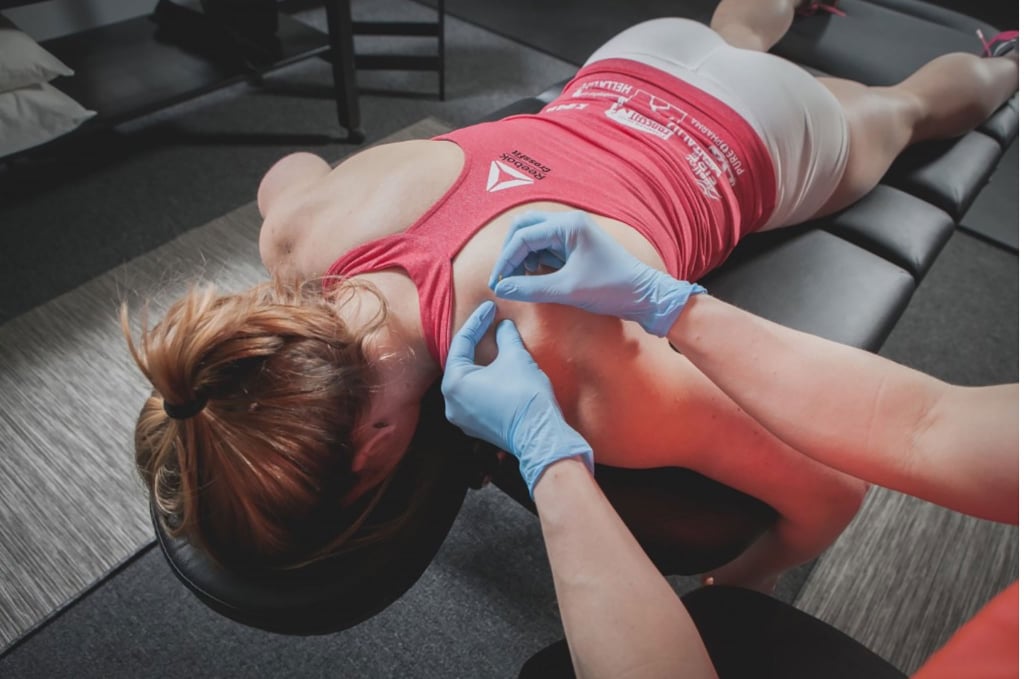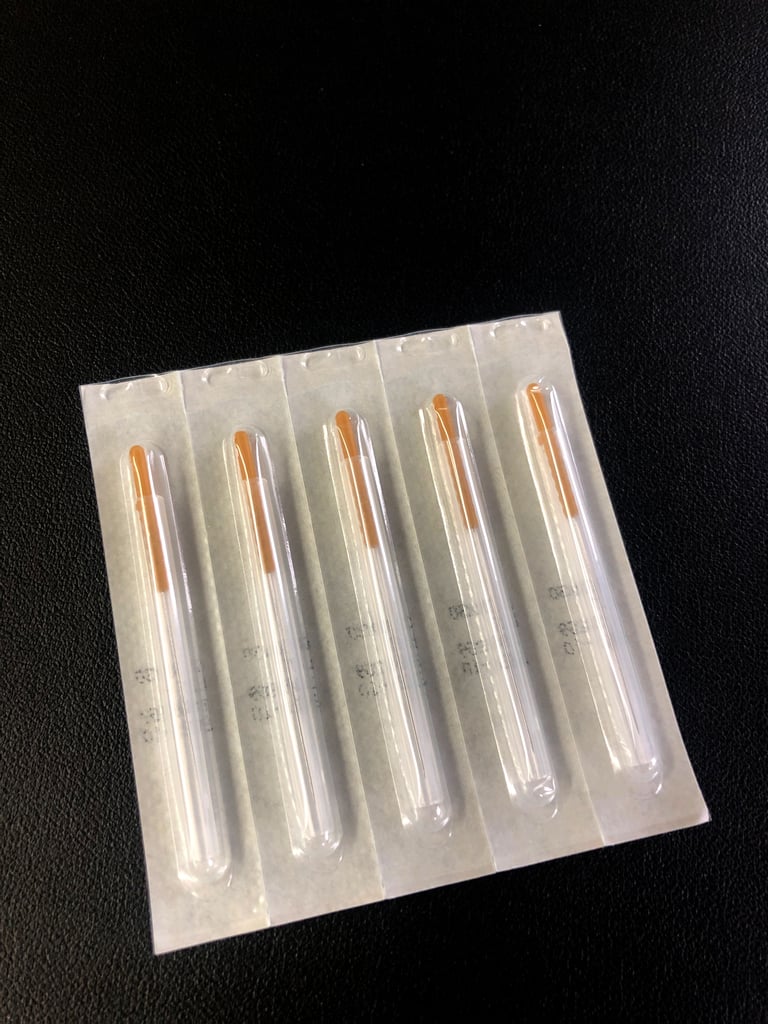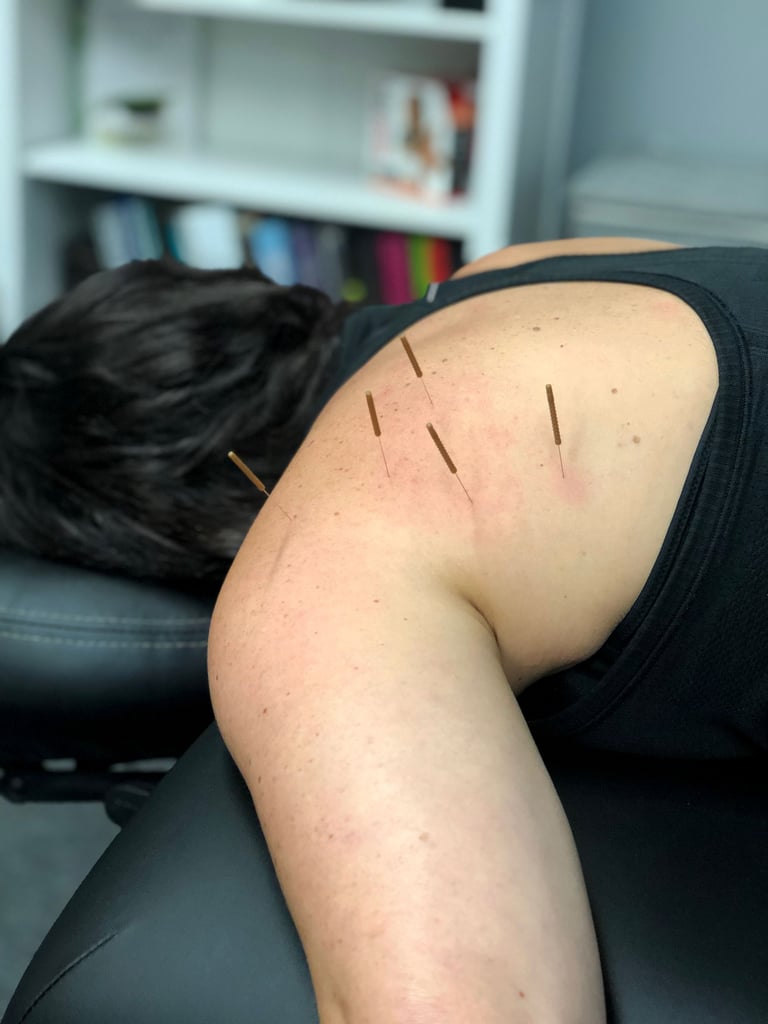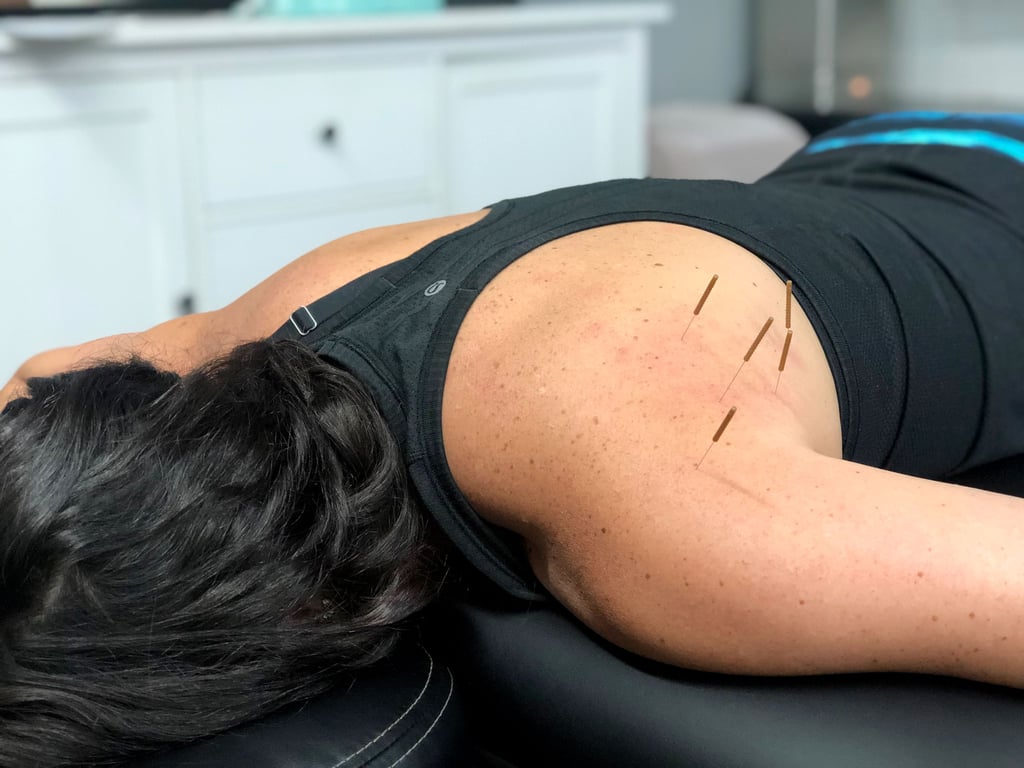When I found out my kids' gymnastics gym offered 90-minute adult classes, I literally jumped at the idea and signed up immediately. Since gymnastics is a huge part of CrossFit, I thought it'd be a great way to strengthen my entire body, work on my handstands and pull-ups, and finally hit my goal of being able to do a muscle up [1].
During the sixth class, we were practicing handstands and I lost my balance and slowly dropped into a backbend — not a big deal; I've done it a million times. But the next day, the front of my shoulder hurt a little. I had to stop taking gymnastics, sadly, and also took a break from CrossFit. After a month, it still wasn't healed, so I went to see a physical therapist. The verdict: a slight tear in my rotator cuff. She suggested I get dry needling, and so far, I've had two sessions. Here's what dry needling feels like.
What Is Dry Needling?
Before I get into what dry needling feels like and whether or not it helped my injury, I'll explain what it is. Dry needling is a safe treatment provided by a trained professional that uses a thin filiform needle (acupuncture needle) to penetrate the skin and stimulate underlying myofascial trigger points, muscles, and connective tissues, explained physical therapist Erin Adams, DPT, CMTPT (certified myofascial trigger point therapist), from Fit2Perform [3], who's been performing dry needling for four years. The purpose of dry needling is to help manage pain and improve movement impairments such as muscle tightness.
Anyone can benefit from dry needling, Erin said. "Certain ailments that are most commonly treated with dry needling include muscular tension or stiffness, muscular or joint pain, muscular injury (strain, sprain, or tear), restricted joint range of motion, muscle cramps, pelvic pain, migraines and tension-type headaches, jaw problems, as well as spinal and disc problems."
I should mention that dry needling is different than acupuncture. Although the same types of needles are used for both, Erin explained, "Dry needling doesn't follow a map of predetermined points. Dry needling is directed to the specific soft tissue structure being treated and does not aim to affect energy or organ systems as acupuncture does." She added that dry needling tends to have a much deeper application than acupuncture.
Why Did I Get Dry Needling?
Erin suggested I try dry needling since so many of her clients had positive results. She explained that because of the small tear, the surrounding muscles (the muscles in my upper back) were compensating and getting super tight, which was preventing the front of my shoulder from healing.
Massageing those muscles would help, but Erin said that when dealing with pain, dry needling can be more effective and last longer than massage. Also, it can be more painful to push and compress on those knots and tight muscles, so massage could actually aggravate the issue.
After explaining the benefits, the low risks, and what it would feel like, I was ready to give dry needling a try, hoping it'd speed up the healing process.
What Does Dry Needling Feel Like?
One at a time, Erin inserted thin needles into trigger points, which are hard or knotted muscle, helping to release the knot and relieve any muscle pain or spasms. Some needles she'd insert and then remove, and others she'd leave in for a minute or so, as you can see in the photo. Actually, when I saw these photos of my shoulder, I was shocked so many needles were in me — it felt like only one!
Both sessions lasted about 15 minutes. Erin used a Theragun to massage the area first, then she performed the dry needling. I definitely felt the needle going in and poking around, which she explained was to further stimulate the muscle. Some areas felt way more intense and painful than others, such as the top of my shoulder and my lat under my armpit.
Every so often, I'd feel my muscle spasm or a sensation travel down my arm. It hurt more than I thought it would, and I even joked that natural childbirth was easier. Deep breathing helped me get through the discomfort, as well as having positive thoughts that this was helping heal my shoulder.
After dry needling, Erin massaged and stretched my upper back and arm with CBD lotion. She then moved my arm in different ways to test my pain and range of motion, and both were greatly improved. I was shocked!
What Does It Feel Like After You Get Dry Needling?
Erin warned that I'd feel a little sore, similar to how I'd feel after an intense workout. I was more sore after the first session, which Erin said was normal; the more sessions you do, the less sore you'll feel.
She said I could take an ibuprofen if I wanted to, but it wasn't bad enough that I needed to. I did feel sore while sleeping and felt a little sore the next day, but it was gone within a few days.
Did Dry Needling Help My Injury?
What I experienced in the week following dry needling was so much less pain in my shoulder plus greater range of motion. Things that used to bother my shoulder such as reaching back to put my seatbelt on, raising my arms overhead, or Downward Facing Dog felt so much better. I was so happy!
Two sessions wasn't going to instantly heal my injury, so Erin recommended that I continue getting dry needling once a week for a few weeks, to continue working out and stretching the area, but to avoid hanging from the bar as well as any overhead weighted exercises (even burpees!).
If you're suffering from a fitness injury, tightness, or decreased range of motion, I'd recommend seeking out an experienced professional to try dry needling for yourself. Working out is essential for my mental well-being, and I'm so grateful that I'm finally seeing progress, and I have Erin and dry needling to thank. I never thought I'd say this, but I hope to soon be back to doing burpees!





